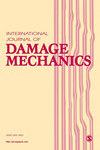微波辅助混凝土破碎:混凝土热力学性能分析的观点
IF 3.9
2区 工程技术
Q2 MATERIALS SCIENCE, MULTIDISCIPLINARY
引用次数: 0
摘要
混凝土有效破碎是混凝土回收利用工程面临的挑战。通过宏观和微观试验研究了微波辐照下混凝土的热损伤演化过程。采用单轴抗压强度试验研究了微波辐照对混凝土宏观力学性能的影响。同时,利用扫描电镜、x射线衍射分析和计算机断层扫描测试对其微观结构演变和化学成分变化进行了研究。结果表明:玄武岩骨料对微波的响应强于砂浆,两者之间产生热梯度应力,导致界面脱落,混凝土损伤;在100°C - 300°C的温度范围内,AFt(钙矾石)水解释放的水与混凝土内部的自由水一起蒸发,导致孔隙率增加,裂缝快速增长。在300℃- 500℃范围内,CH和C- s - h发生分解,导致内部裂纹扩展。足够的功率输入后,混凝土内部形成主断裂带,形成集中破坏区。断裂主要发生和扩展在骨料-砂浆界面。研究结果可为微波辅助混凝土破碎的应用提供参考。本文章由计算机程序翻译,如有差异,请以英文原文为准。
Microwave assisted concrete breakage: The viewpoint on analysing concrete thermal and mechanical behaviour
Effective concrete breaking is a challenge for concrete recycling engineering. Macroscopic and microscopic tests were conducted to explore the thermal damage evolution of concrete under microwave irradiation in this paper. Uniaxial compressive strength test was employed to investigate the impact of microwave irradiation on concrete macroscopic mechanical. Concurrently, scanning electron microscopy test, X-Ray diffraction analysis, and computed tomography scan test were utilized to investigate microstructure evolution and chemical content variation. The results show that the response of basalt aggregate to microwaves was stronger than that of the mortar, resulting in thermal gradient stress between them, leading to interface debonding and concrete damage. Within the temperature range of 100°C–300°C, the water liberated by AFt (Ettringite) hydrolysis evaporated in conjunction with the free water within the concrete, leading to the increment of porosity and rapid growth of cracks. Within 300°C–500°C, CH and C-S-H decomposed, which causes internal crack propagation. A main fracture zone was formed in concrete after sufficient power input, creating a zone of concentrated damage. The fracture mainly occurred and propagated at aggregate–mortar interface. The study can provide a reference for the application of microwave-assisted concrete breaking.
求助全文
通过发布文献求助,成功后即可免费获取论文全文。
去求助
来源期刊

International Journal of Damage Mechanics
工程技术-材料科学:综合
CiteScore
8.70
自引率
26.20%
发文量
48
审稿时长
5.4 months
期刊介绍:
Featuring original, peer-reviewed papers by leading specialists from around the world, the International Journal of Damage Mechanics covers new developments in the science and engineering of fracture and damage mechanics.
Devoted to the prompt publication of original papers reporting the results of experimental or theoretical work on any aspect of research in the mechanics of fracture and damage assessment, the journal provides an effective mechanism to disseminate information not only within the research community but also between the reseach laboratory and industrial design department.
The journal also promotes and contributes to development of the concept of damage mechanics. This journal is a member of the Committee on Publication Ethics (COPE).
 求助内容:
求助内容: 应助结果提醒方式:
应助结果提醒方式:


